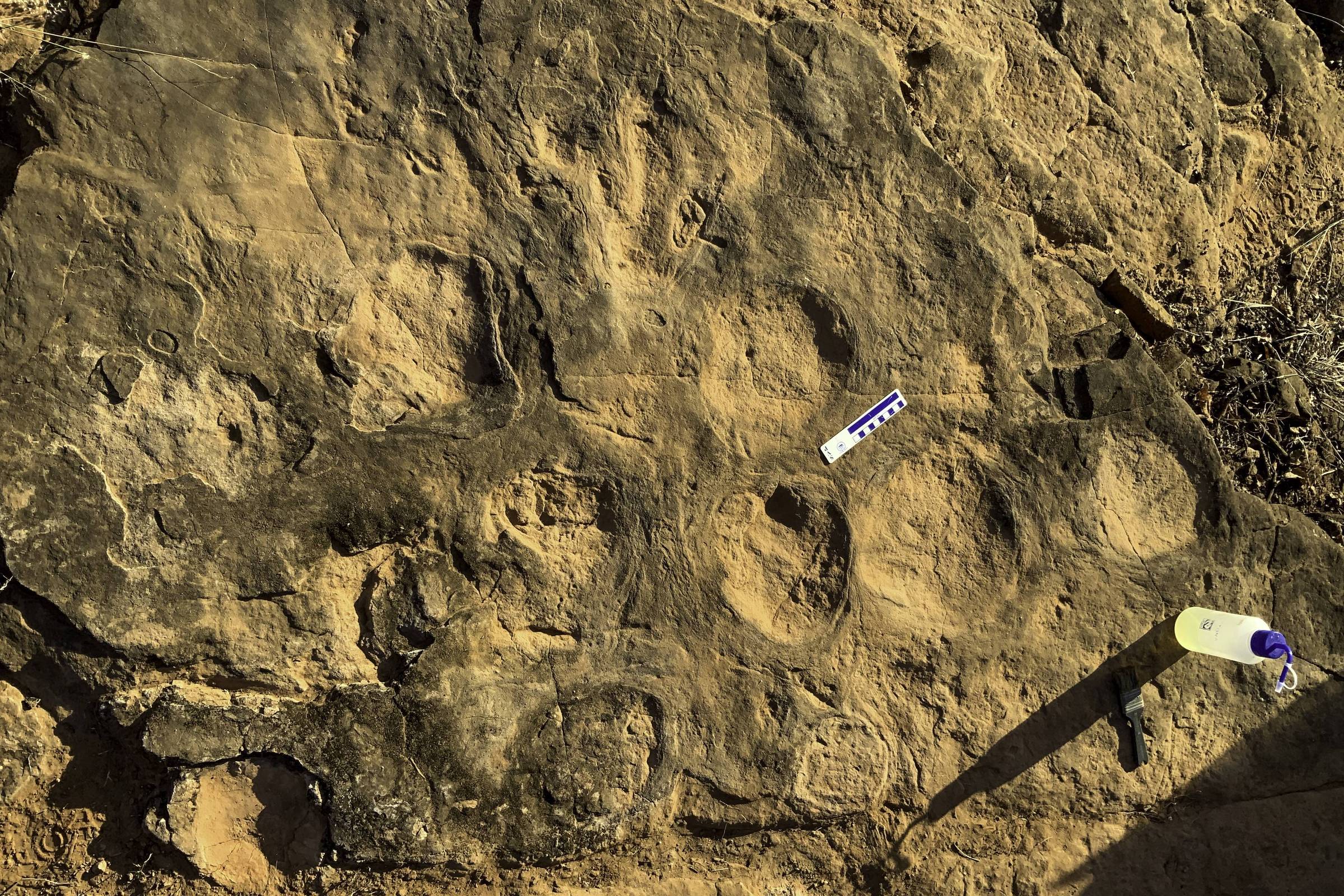A set of at least ten footprints, from different individuals and even different groups of dinosaurs, was found on a farm in the city of General Salgado, 502 kilometers from the capital, São Paulo.
With an estimated age of 100 to 90 million years ago, the record corresponds to the first discovery of dinosaur footprints from the Late Cretaceous period in the state of São Paulo, according to researchers from the Federal University of Uberlandia, UFSCar (Federal University of São Carlos). ) and from MZUSP (Museum Zoology USP), responsible for the study.
“It is truly an unprecedented discovery because other footprints from the same basin that have already been described are from another formation, in the state of Paraná, and from a different era,” explains paleontologist Bruno Navarro, a doctoral student at the University of the South Pacific Zoological Museum. “These footprints may be from a different time period and from a different geological context, perhaps a river or lake, whereas the footprints found previously were from a desert environment, with wind movement. [do vento]”.
Navarro participated in the excavations that took place last month inside the city of Sao Paulo. It was necessary to break the rock into three parts so that we could carry each piece and transport it to the MZUSP Paleontology Laboratory, south of São Paulo, where each block weighed about 100 kg.
Those with the features include a theropod dinosaur (a group of bipedal carnivorous dinosaurs, which includes tyrannosaurs, abelisaurs, and also avian lineage), a sauropod (a large herbivorous dinosaur that moved on four legs), and possibly an ornithopod (a bipedal herbivorous dinosaur).
According to paleontologist and specialist in marine fossils (as traces of extinct organisms are called, but they do not represent preserved parts of the animal) Marcelo Adorna, from UFSCar, it is possible to recognize the presence of different organisms due to the deformities that each of them suffers. The imprint made in the rock.
“It is possible that at least three different animals are represented there, which have theropods, which is indisputable because of the pronounced three toes with the claw, and it is possible that there was another animal with a more rounded shape, such as ungulates. [ornitópode]A third, very round, was probably a descendant of sauropods. “These are the interpretations we make later in the lab.”
According to Navarro, it is very difficult to determine which species was responsible for each footprint. This is because without preserved bony elements, a description based on foot anatomy alone is complicated. “We can’t do that in technology [área da paleontologia que estuda vestígios de organismos fósseis] Associated with species. “We communicate with the producers, which is why we have identified three different types of footprint.”
The deposits in which the footprints were found are part of the Bauru Basin, where Cretaceous rocks are found in the interior of the states of Paraná, Minas Gerais, São Paulo and part of Mato Grosso do Sul. The Cretaceous represents the third and final period of the Cretaceous Period. The Mesozoic era extended from 145 to 66 million years ago.
In the same basin, many fossils have already been found, such as crocodiles, chelonians (turtles), birds, snakes and dinosaurs, but this is the first time that scientists have found footprints, and they are in good condition. However, at the same level where the animal remains were found, there were no fossils preserved.
The footprints were accidentally found by Ariovaldo Giarrita, a professor of zoology at the Federal University of Uberlandia (Ituyutapa Campus), who was looking for snake fossils in the area – he found snake fossils in rocks of the same age in the basin area that… It is located in Triângulo Mineiro.
“I also knew there was a possible temporal connection [rochas de mesmo estrato possuem a mesma idade]“I went to see if I could find other fossils when I came across this set of footprints, which in itself attracted attention because of their level of preservation and because they are made up of a group of dinosaur species,” he said. .
The team is now carrying out a precise analysis of the footprints in the MZUSP laboratory, which can help indicate, for example, characteristics of the environment. It is likely that these footprints were formed when the animals went to the river to drink water.
“By studying footprints, we were able to establish ecological relationships that bone alone often cannot, as if a carnivorous dinosaur were chasing herbivores. We will analyze all of this in detail on the basis of what is called biodeformation, which is ‘the type of pressure under The sediment that led to printing,” explains Adorna.
In addition to publishing the scientific study, Navarro and the MZUSP team intend to take the footprints to… Exhibition in the museumWhich is located south of the capital. The researcher says: “In addition to organizing new groups to search for bones and other footprints that may be preserved at other levels.”

“Incurable thinker. Food aficionado. Subtly charming alcohol scholar. Pop culture advocate.”






More Stories
NASA Releases Selfie of Perseverance Rover Working on Mars
NVIDIA driver includes hidden Final Fantasy XVI profile
PlayStation Plus Extra and Premium saw a significant drop in players in July